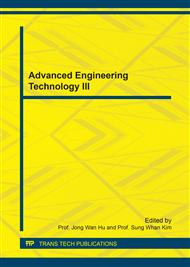p.3
p.9
p.15
p.20
p.25
p.30
p.36
p.43
Developing Nanomaterials for Ironmaking Processes: Theory and Practice
Abstract:
Ironmaking processes take three main forms namely; blast furnace, direct reduction and direct smelting processes. Ironmaking is energy intensive sector as it requires huge amount of natural resources. It is also very important for the worldwide economy where it provides the backbone for construction, transportation and manufacturing. Many factors are strongly affecting the developing of ironmaking processes such as energy consumption, materials costs, and environment problems. These factors should be considered when discussing any new trend for developing ironmaking processes. The present work handles the current status and future of ironmaking processes. The technical and economic environment that motivates the development of these processes will be also clarified. The manuscript is designated to investigate theoretically and practically the possibility of using nanomaterials in ironmaking processes. Nano-sized iron oxides can be considered a promising source for deceasing energy consumption in iron and steel industry. The reduction of iron oxide is the most important processes in ironmaking and usually operated at relatively high temperatures. The nanopowder of iron oxide could be charged to a blast furnace together with the blast, much like the current pulverized coal injection technology. In that case, the reducibility of blast furnace burdens will be improved and consequently the energy consumption for reduction will be declined. Accordingly, minimizing the energy consumption will greatly influence the gross energy consumption of iron and steel production.
Info:
Periodical:
Pages:
3-8
Citation:
Online since:
June 2017
Authors:
Keywords:
Price:
Сopyright:
© 2017 Trans Tech Publications Ltd. All Rights Reserved
Share:
Citation:


